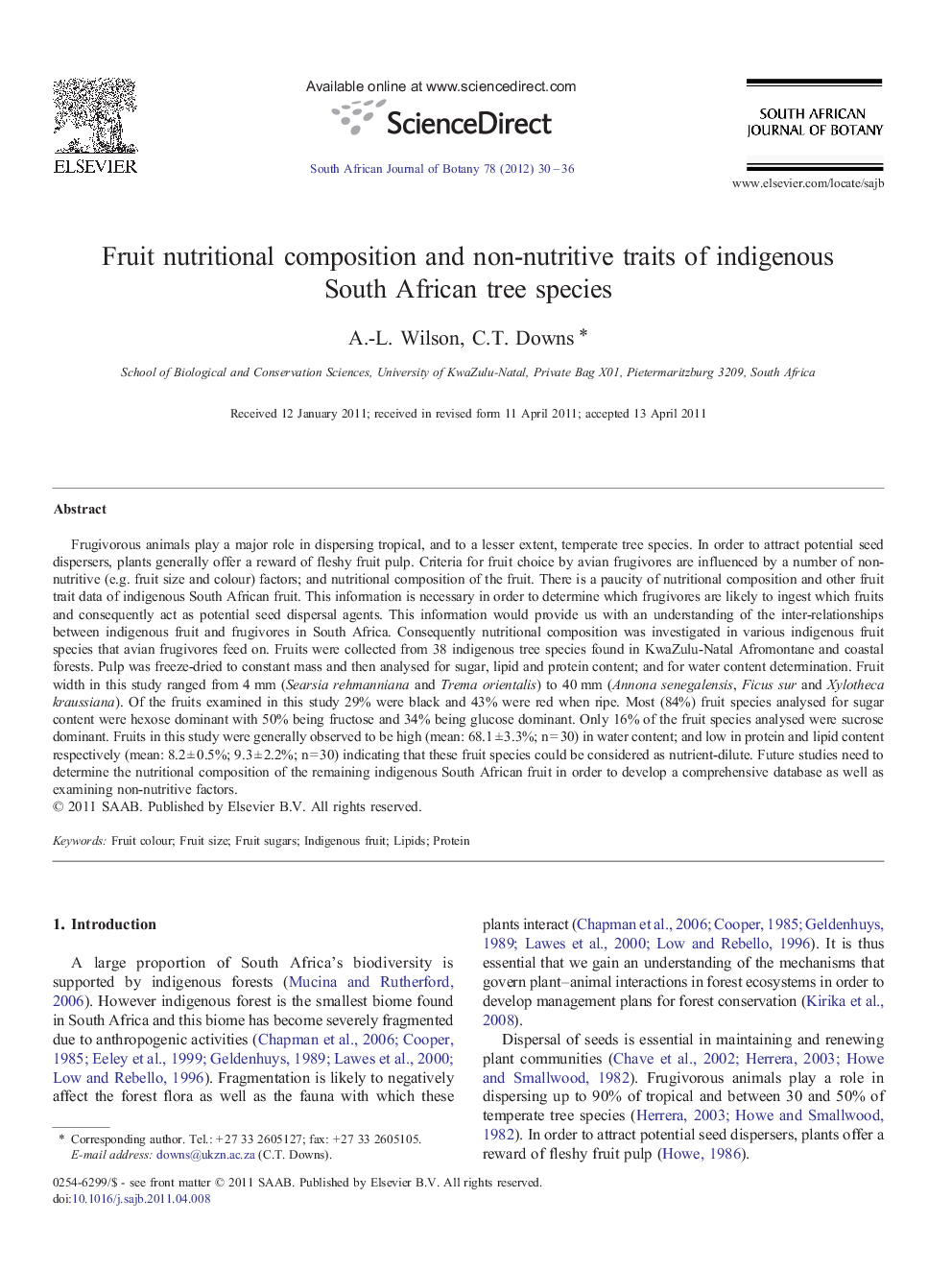| کد مقاله | کد نشریه | سال انتشار | مقاله انگلیسی | نسخه تمام متن |
|---|---|---|---|---|
| 4521039 | 1625180 | 2012 | 7 صفحه PDF | دانلود رایگان |

Frugivorous animals play a major role in dispersing tropical, and to a lesser extent, temperate tree species. In order to attract potential seed dispersers, plants generally offer a reward of fleshy fruit pulp. Criteria for fruit choice by avian frugivores are influenced by a number of non-nutritive (e.g. fruit size and colour) factors; and nutritional composition of the fruit. There is a paucity of nutritional composition and other fruit trait data of indigenous South African fruit. This information is necessary in order to determine which frugivores are likely to ingest which fruits and consequently act as potential seed dispersal agents. This information would provide us with an understanding of the inter-relationships between indigenous fruit and frugivores in South Africa. Consequently nutritional composition was investigated in various indigenous fruit species that avian frugivores feed on. Fruits were collected from 38 indigenous tree species found in KwaZulu-Natal Afromontane and coastal forests. Pulp was freeze-dried to constant mass and then analysed for sugar, lipid and protein content; and for water content determination. Fruit width in this study ranged from 4 mm (Searsia rehmanniana and Trema orientalis) to 40 mm (Annona senegalensis, Ficus sur and Xylotheca kraussiana). Of the fruits examined in this study 29% were black and 43% were red when ripe. Most (84%) fruit species analysed for sugar content were hexose dominant with 50% being fructose and 34% being glucose dominant. Only 16% of the fruit species analysed were sucrose dominant. Fruits in this study were generally observed to be high (mean: 68.1 ± 3.3%; n = 30) in water content; and low in protein and lipid content respectively (mean: 8.2 ± 0.5%; 9.3 ± 2.2%; n = 30) indicating that these fruit species could be considered as nutrient-dilute. Future studies need to determine the nutritional composition of the remaining indigenous South African fruit in order to develop a comprehensive database as well as examining non-nutritive factors.
► We investigated the nutritional composition of indigenous South African fruit species.
► Most fruits were found to be hexose dominant.
► Fruits were found to be nutrient dilute with high water but low lipid and protein content.
► Future studies need to examine non-nutritive factors as well.
► This information is important for forest conservation.
Journal: South African Journal of Botany - Volume 78, January 2012, Pages 30–36